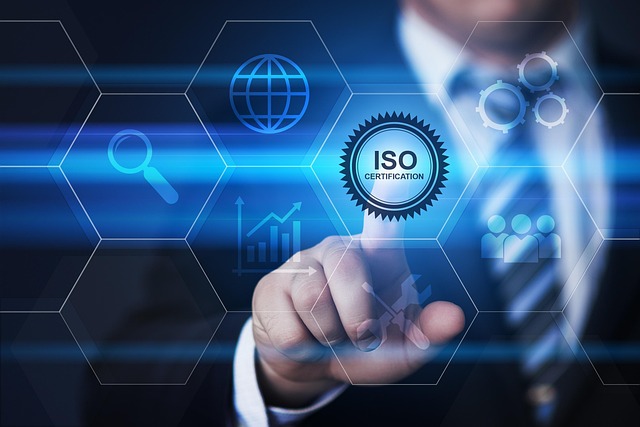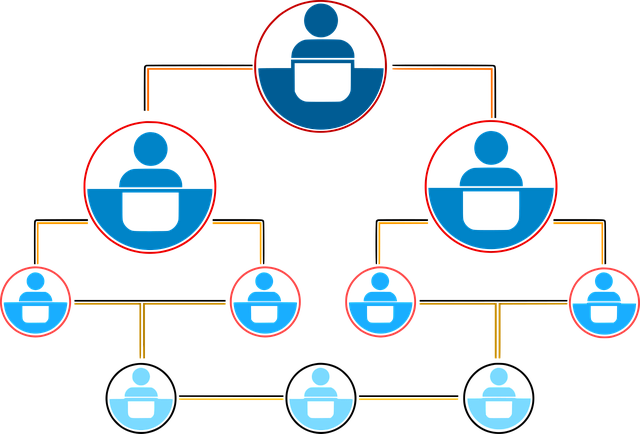Visual Management Strategies, centered around Lean principles and 5S training (Sort, Set in Order, Shine/Clean, Standardize, Sustain), revolutionize workplace organization. By implementing visual cues like color-coding and signage, organizations create transparent, intuitive spaces that serve as living guides to operational standards. This approach drives continuous improvement, enhances productivity, fosters accountability, and promotes teamwork, ultimately achieving shared goals through streamlined processes and enhanced efficiency. Case studies show significant gains in safety, productivity, and quality control. Effective implementation requires regular 5S training, fostering a culture of continuous improvement, and iterative evaluation based on feedback and data analysis.
Visual Management Strategy is a powerful tool for enhancing workplace efficiency through process visualization and communication. This article delves into the core concepts of Lean management, focusing on how a Visual Management Strategy, driven by 5S training, can revolutionize workplace organization. We explore the role of standardization in fostering continuous improvement, dissecting key components for effective implementation. Through case studies and best practices, we highlight benefits and challenges, offering actionable steps to adopt this game-changing strategy for optimal performance.
- Understanding Visual Management Strategy: A Lean Approach
- The Role of 5S Training in Workplace Organization
- Implementing Standardization for Continuous Improvement
- Key Components of an Effective Visual Management System
- Benefits and Challenges: Case Studies and Best Practices
- Actionable Steps to Adopt a Visual Management Strategy
Understanding Visual Management Strategy: A Lean Approach

Visual Management Strategy, rooted in Lean principles, is a powerful approach to enhancing workplace organization and efficiency through process standardization. At its core lies 5S training – a foundational method that involves sorting, setting in order, shining (cleaning), standardizing, and sustaining. This systematic process not only ensures an organized workspace but also serves as a visual representation of operational standards, making it easier for employees to understand and follow procedures.
By adopting Visual Management, organizations can facilitate continuous improvement initiatives like 5S continuous improvement programs. This involves regularly reviewing and refining processes to eliminate waste, reduce errors, and improve productivity. Visual cues, such as color-coding, signage, and specific areas designated for tasks or materials, create a transparent and intuitive environment where everyone understands their role in maintaining an efficient workflow. This lean management technique promotes a culture of accountability, enabling teams to work cohesively towards common goals.
The Role of 5S Training in Workplace Organization

The Role of 5S Training in Workplace Organization
In the realm of lean management, 5S training stands out as a powerful tool for achieving optimal workplace organization. This structured approach, rooted in Japanese manufacturing practices, involves sorting, setting in order, shining (cleaning), standardizing, and sustaining. By implementing 5S principles, organizations can transform their workspace into a streamlined, efficient environment that facilitates improved productivity and quality control.
Through 5S training, employees learn to identify and discard unnecessary items, organize tools and equipment for easy accessibility, maintain cleanliness to prevent errors and accidents, and establish consistent standards across processes. This continuous improvement methodology not only enhances operational efficiency but also fosters a culture of engagement and ownership among the workforce. Process standardization, enabled by 5S, ensures that tasks are executed uniformly, minimizing waste and maximizing output in today’s competitive business landscape.
Implementing Standardization for Continuous Improvement

Implementing Standardization for Continuous Improvement begins with a foundational understanding and application of 5S training principles. This structured approach to workplace organization, encompassing Sort, Set in Order, Shine (Clean), Standardize, and Sustain, serves as a powerful tool within lean management strategies. By teaching employees the art of minimizing clutter and maximizing efficiency through process standardization, organizations can achieve remarkable gains.
The key lies in fostering a culture that continuously seeks improvement. Standardization ensures that tasks are performed consistently, eliminating waste and streamlining operations. This disciplined approach, rooted in 5S continuous improvement methodologies, encourages teams to identify inefficiencies and make data-driven adjustments. As a result, organizations can optimize their processes, enhance productivity, and create an environment conducive to long-term success.
Key Components of an Effective Visual Management System

An effective visual management system is a cornerstone of any efficient and well-organized workplace. At its core, it relies on several key components that work in harmony to streamline operations and enhance productivity. The first crucial element is 5S training, which involves organizing spaces by sorting items, setting them in order, shining a light on the area, standardizing practices, and continually improving the environment. This foundational practice paves the way for other elements like clear and consistent process standardization to take root.
Visual management also leverages the power of lean management principles to eliminate waste and optimize workflows. By implementing these strategies, businesses can achieve remarkable workplace organization that not only enhances efficiency but also fosters a culture of continuous improvement. This iterative process encourages regular reviews and adjustments, ensuring that the visual system remains dynamic and responsive to evolving business needs.
Benefits and Challenges: Case Studies and Best Practices

Visual management strategies, rooted in lean management and 5S training, offer significant benefits for workplace organization and continuous improvement. By implementing clear visual cues, signs, and standardized processes, teams can streamline work flows, reduce waste, and enhance overall efficiency. Case studies from manufacturing plants and offices have shown that these methods lead to improved safety, increased productivity, and better quality control. For instance, a study by a leading automotive manufacturer reported a 30% reduction in production time after adopting visual management principles.
However, transitioning to a visually-driven culture presents challenges. It requires commitment from top management, active participation from employees, and continuous refinement. Process standardization can be particularly difficult in dynamic environments where tasks evolve rapidly. Yet, best practices exist. Successful organizations prioritize regular 5S training and foster an environment of continuous improvement, where visual cues are not just implemented but also regularly evaluated and adapted based on feedback and data analysis. This iterative approach ensures that visual management strategies remain relevant and effective over time.
Actionable Steps to Adopt a Visual Management Strategy

Adopting a visual management strategy is a powerful way to transform your workplace and enhance operational efficiency. It leverages the power of visual cues, color-coding, and clear signage to communicate information at a glance. Here are actionable steps to help you implement this approach effectively:
1. Initiate with 5S Training: Start by educating your team on the fundamentals of 5S—Sort, Set in Order, Shine (Clean), Standardize, and Sustain. This structured framework promotes workplace organization and ensures that visual management principles are integrated into daily practices. Regular training sessions will empower employees to actively participate in maintaining a visually organized environment.
2. Implement Lean Management Principles: Visual management aligns perfectly with lean management philosophy, focusing on eliminating waste and optimizing processes. Identify areas where process standardization can be improved and visualize these as clear workflows or step-by-step instructions. This visual representation should detail the ideal workflow, making it easy for employees to follow and ensuring consistency in task execution.
3. Standardize Communication Channels: Streamline communication by establishing universal symbols and signage throughout your workspace. Use color-coding to categorize different types of information or areas within the facility. For instance, green could signify a safe zone, while red might indicate potential hazards. This simple yet powerful tool enables quick comprehension and facilitates continuous improvement initiatives.
4. Regularly Review and Update: Visual management is not a one-time project but an ongoing process. Schedule periodic reviews to ensure that visual aids remain relevant and effective. As processes evolve, update the signage and standards accordingly. Involving employees in this review process fosters a sense of ownership and encourages continuous improvement culture.
Visual management strategies, leveraging tools like 5S training and process standardization, offer a powerful lean management approach to transform cluttered workplaces into organized, efficient operations. By implementing these practices, businesses can achieve significant improvements in workplace organization and continuous improvement, enhancing overall productivity and worker satisfaction. As demonstrated in various case studies, adopting a visual management strategy is not just beneficial but essential for modern enterprises aiming to stay competitive and adapt to evolving demands.
